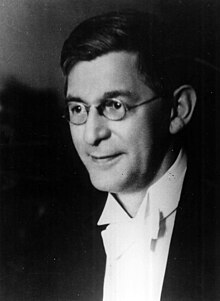Thomas Parnell (physicist)
Thomas Parnell (born July 5, 1881 in Northants , England , † September 1, 1948 in Brisbane , Australia ) was a British- Australian physicist . He was the first professor of physics at the University of Queensland .
Parnell studied science at the University of Cambridge with a bachelor's degree in 1903 and a master's degree in 1907. In the Cavendish Laboratory he researched with Owen Richardson on the diffusion of hydrogen through hot platinum. From 1904 he was in Melbourne and became a lecturer in physics. Formally he was subordinate to the professor of mathematics and physics HJ Priestley, but in reality he had to put together the physics curriculum himself. As a member of the Public Examination Board, he was also responsible for raising quality standards in math and physics in schools in Queensland. During the First World War he was an officer for the gas defense in France. On his return he was given a chair in physics at the University of Queensland in 1919. He later served in the university's senate several times. From 1938 to 1944 he was President of the Professorial Board.
He devoted himself almost exclusively to teaching and hardly conducted any research. In 1922 he took part in an expedition to Goondiwindi to test the general theory of relativity during a solar eclipse.
1927 launched Parnell an experiment to demonstrate the flow properties and the viscosity of bad luck , the so-called Pitch Drop Experiment ( pitch drop experiment ): He was hot, liquid pitch in a sealed glass funnel, left it three years to harden, then opened the shutter. In fact, the first drop fell eight years later, the second another nine years later, and in 2014 the ninth and, for the time being, last drop of pitch fell out of the funnel.
Web links
| personal data | |
|---|---|
| SURNAME | Parnell, Thomas |
| BRIEF DESCRIPTION | British-Australian physicist |
| DATE OF BIRTH | July 5, 1881 |
| PLACE OF BIRTH | Northants , England |
| DATE OF DEATH | September 1, 1948 |
| Place of death | Brisbane , Australia |
